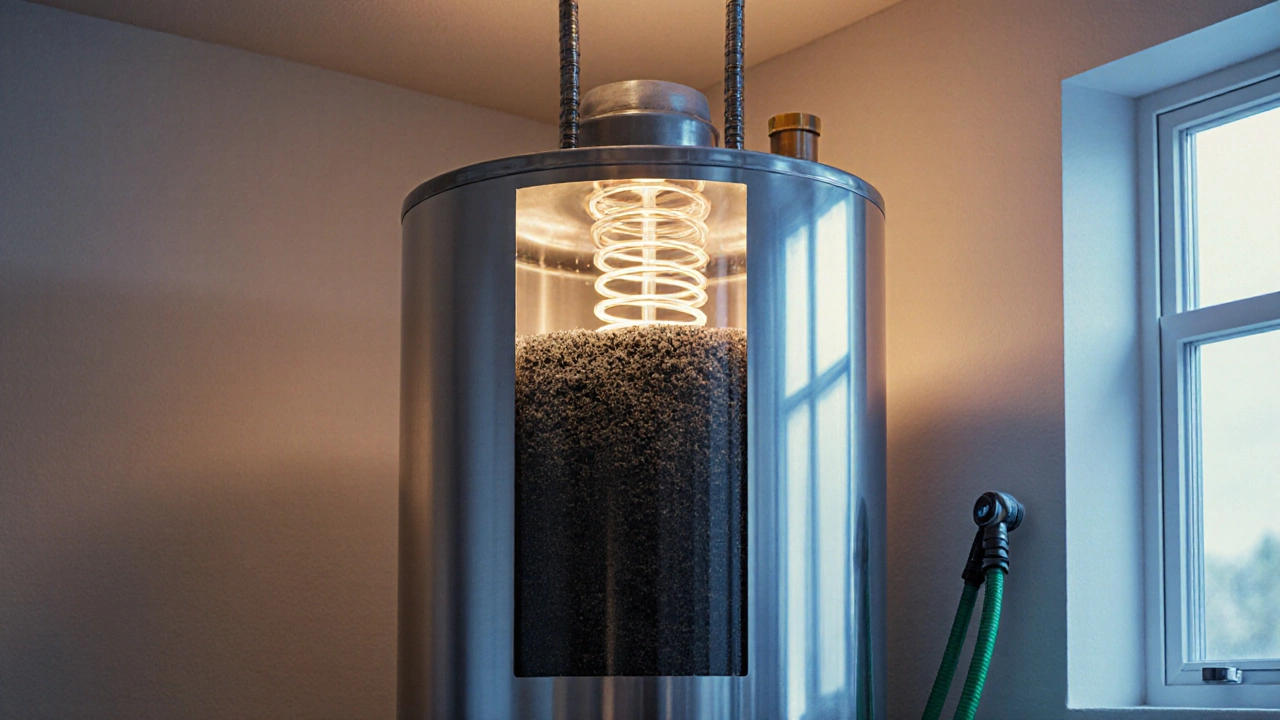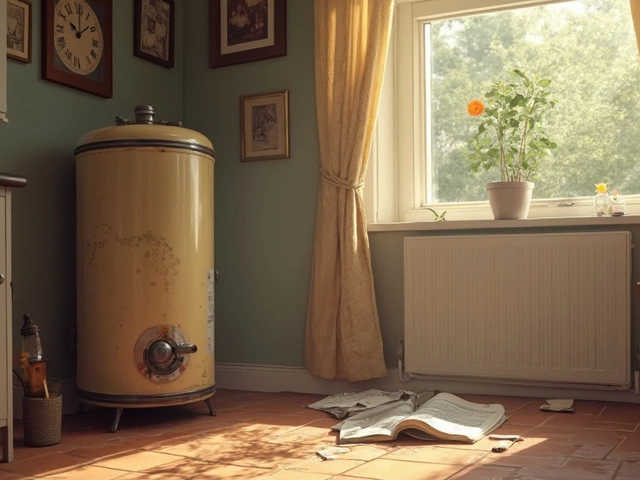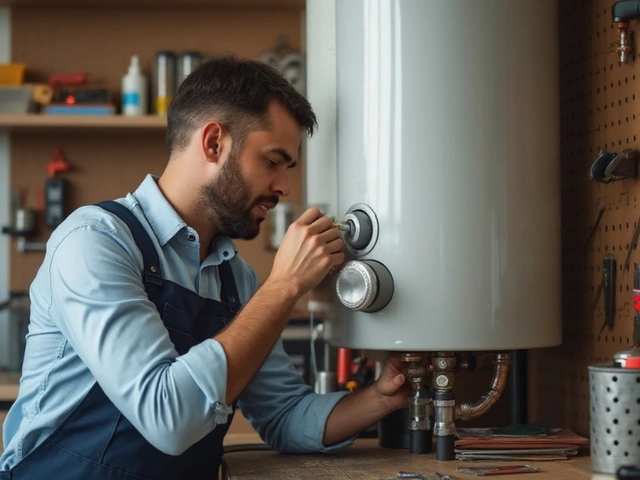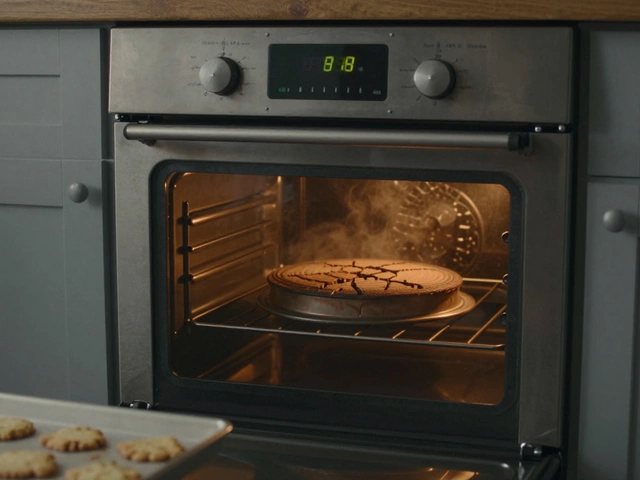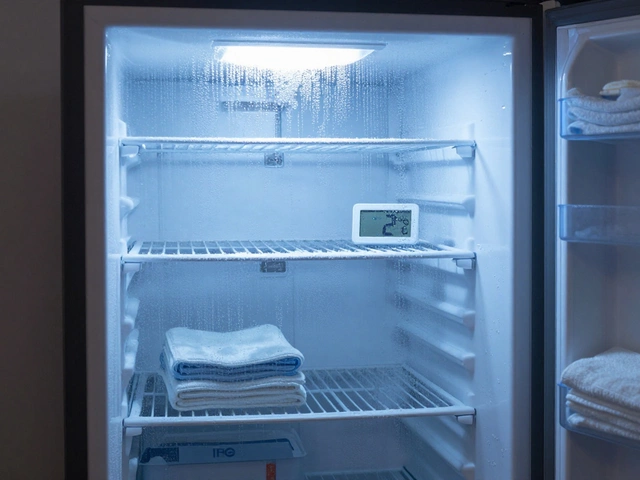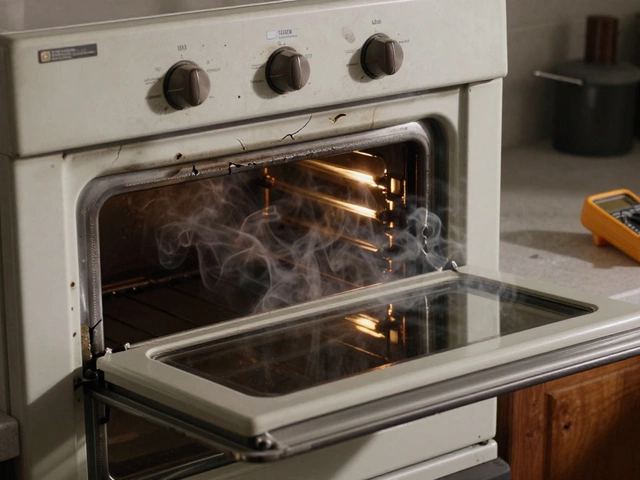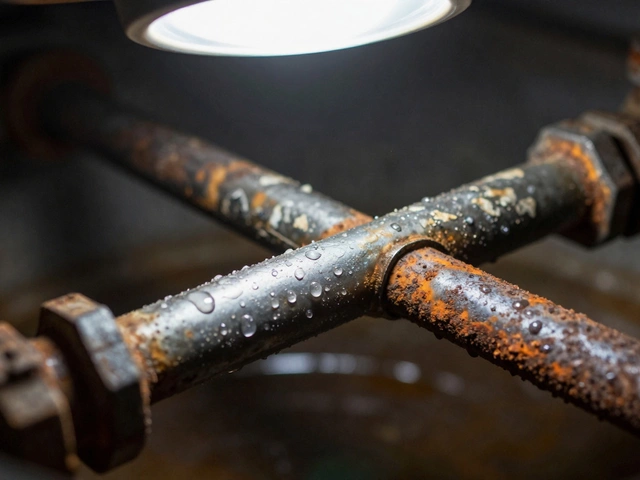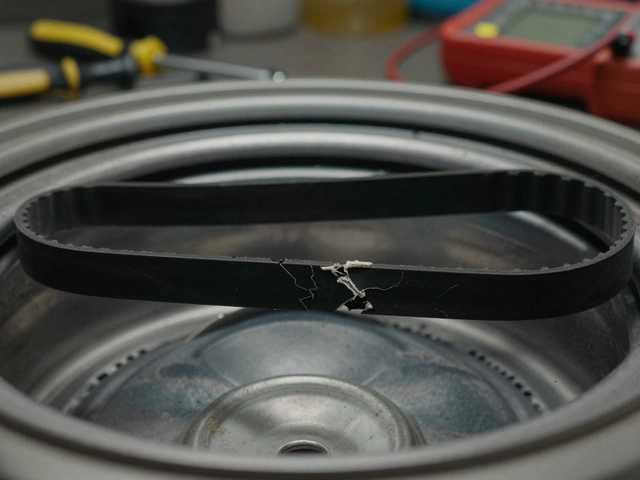Hot Water Heater Troubleshooting Tool
Find Your Issue
Select the symptom you're experiencing to get diagnosis and solutions
Diagnosis & Solutions
Preventive Maintenance
Follow these steps to avoid common issues:
- Flush the tank annually to remove sediment
- Test pressure relief valve once yearly
- Check thermostat settings quarterly
- Inspect dip tube and anode rod every 2-3 years
- Check for sediment buildup in hard water areas
When a hot water heater is the appliance that heats water for showers, dishwashing and other household needs starts acting up, the first question is usually what’s wrong. The most frequent culprit behind chilly showers or strange noises is hot water heater problems that anyone with a home can run into.
Why Hot Water Heaters Fail: The Top Culprit
Across the globe, technicians point to one issue that shows up more often than anything else: sediment buildup accumulation of minerals like calcium and magnesium that settle at the bottom of the tank. Over time, that crust acts like an extra blanket, slowing heat transfer and forcing the heater to work harder.
How Sediment Buildup Shows Up
- Water takes longer to reach the set temperature.
- The heater makes rumbling or popping sounds as the sediment shifts.
- Energy bills creep up because the unit runs longer.
Cleaning the tank annually is the simplest prevention step, but many homeowners skip it, thinking the heater will take care of itself.
Other Frequent Problems and Their Symptoms
Besides sediment, there are several other issues that pop up regularly. The table below breaks them down, shows the tell‑tale signs, and offers a quick fix you can try before calling a pro.
| Problem | Typical Symptoms | Quick DIY Fix |
|---|---|---|
| Heating element failure | No hot water or water not reaching set temperature | Test with a multimeter; replace element if faulty |
| Thermostat malfunction | Water is too hot, too cold, or temperature fluctuates | Adjust thermostat; replace if it won’t stay set |
| Gas valve or pilot light issue | Gas heater won’t ignite, flickering pilot, smell of gas | Check pilot for debris; clean or relight; replace gas valve if still dead |
| Pressure relief valve leak | Water drips from the T‑valve discharge pipe | Test valve with a lever; replace if it won’t reseat |
| Dip tube crack | Cold water at the faucet soon after a hot shower | Inspect the dip tube inside the tank; replace if damaged |
| Anode rod corrosion | Rusty water, reduced tank life | Remove the anode; replace with a new magnesium or aluminum rod |
Digging Deeper: The Heating Element
The heating element is the metal coil inside electric water heaters that converts electricity into heat. When it burns out, the tank can still hold water, but the water stays cold. Spot‑checking with a multimeter is easy: set the meter to ohms, touch the leads to the element’s terminals, and look for a reading between 10‑30 Ω. Anything high or infinite means the element is toast.
Replacing an element isn’t rocket science-just turn off power, drain the tank, unscrew the old coil, and bolt in a new one that matches the manufacturer’s specs.
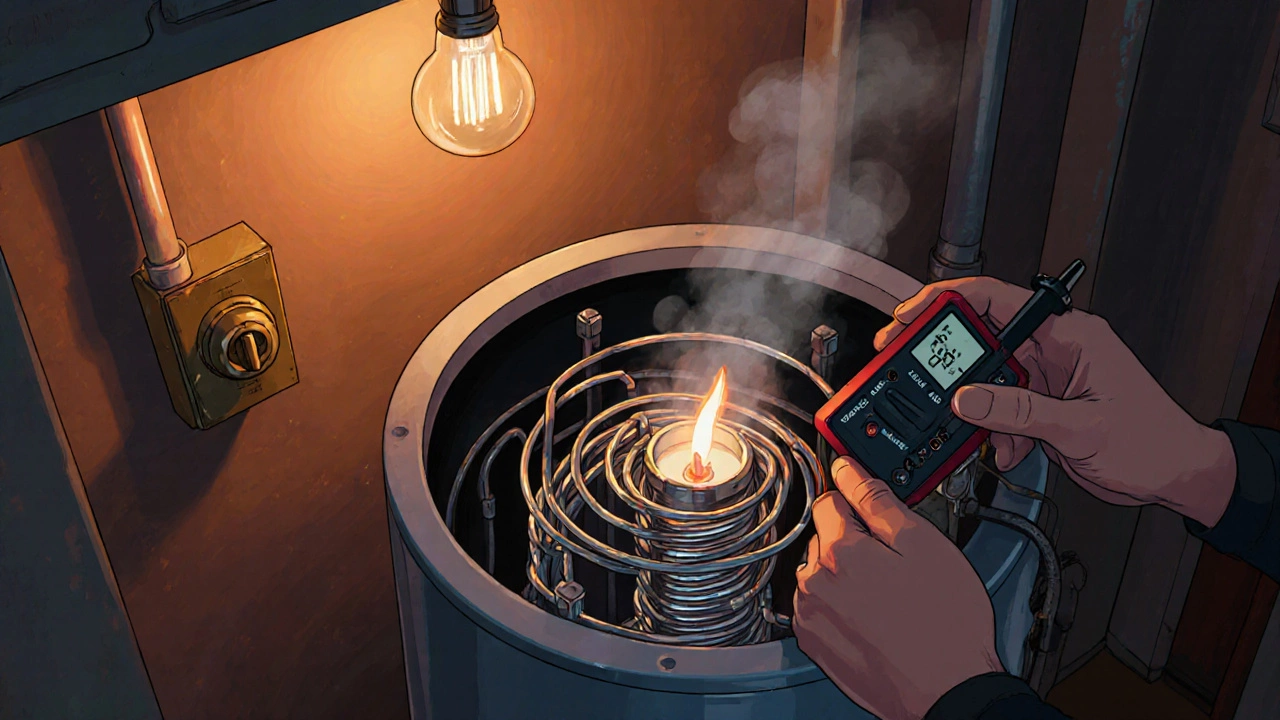
Thermostat Trouble: Why Temperature Jumps Happen
The thermostat regulates the temperature inside the tank by turning the heating element or gas burner on and off. A stuck thermostat can make water either scalding hot or perpetually lukewarm.
Most modern heaters have a dial you can turn a few degrees up or down. If tweaking the dial doesn’t change the water temperature, the thermostat itself is likely faulty and should be swapped out. Look for a model number on the back of the unit; replacement parts are widely available.
Gas‑Powered Heaters: Pilot Light & Gas Valve Issues
For gas‑fired models, the pilot light is the small flame that ignites the main burner is the first thing to check when nothing heats up. A dirty or misaligned pilot will sputter and go out.
Turn off the gas, wait a minute, then clean the pilot assembly with a soft brush. Relight according to the manufacturer’s instructions. If the pilot still won’t stay lit, the gas valve controls the flow of natural gas or propane to the burner may be stuck closed. A professional should replace the valve, as handling gas carries safety risks.
The Safety Net: Pressure Relief Valve
Every hot water heater has a pressure relief valve (PRV) a safety device that releases excess pressure to prevent tank rupture. If you see a slow drip from the discharge pipe, the valve is doing its job-or it might be leaking.
Lift the lever briefly; water should gush out and then stop. If it continues to drip, the valve is worn out and must be replaced. Ignoring a bad PRV can lead to catastrophic tank failure.
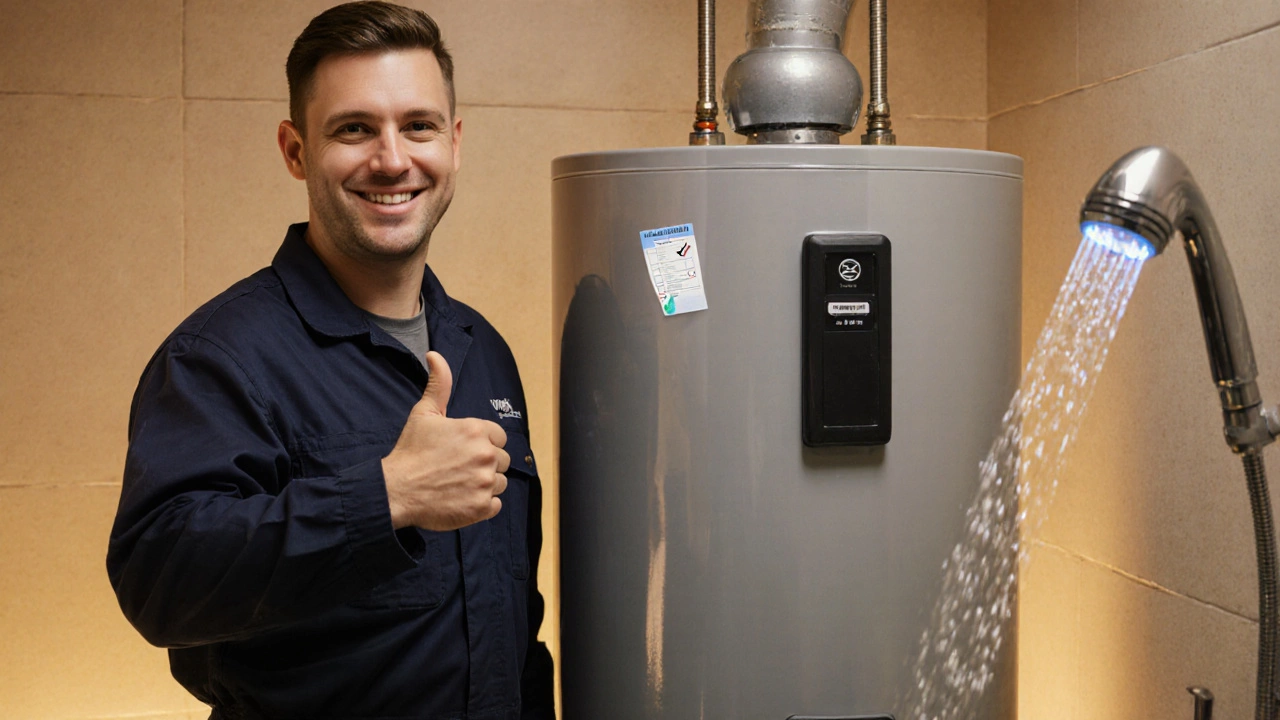
Cold‑Water Surprises: Dip Tube and Anode Rod
The dip tube is a plastic pipe that directs incoming cold water to the bottom of the tank, allowing hot water to rise to the top. Over time, the tube can crack or melt, causing cold water to mix straight into the outlet.
Inspect the tube by removing the cold‑water inlet; if you spot cracks, replace it with a stainless‑steel version for longer life.
Meanwhile, the anode rod is a sacrificial metal rod that attracts corrosive elements, protecting the steel tank slowly dissolves. When it’s more than 50% corroded, the tank itself starts rusting from the inside, leading to leaks.
Unscrew the rod from the top of the tank, check its condition, and swap it for a fresh magnesium or aluminum rod. Most experts recommend checking it every 2‑3 years.
Preventive Maintenance Checklist
- Flush the tank once a year to remove sediment.
- Test the PRV for proper release.
- Inspect and tighten the thermostat settings.
- Check the pilot light and gas valve for clean operation.
- Examine the heating element or burner for scaling.
- Replace the anode rod on a schedule based on water hardness.
- Verify the dip tube is intact and not cracked.
Following this routine catches most issues before they cause a cold shower or a noisy tank.
When to Call a Professional
If you’ve tried the DIY steps above and still face problems, it’s time to call a certified water heater repair service that diagnoses and fixes heating appliances safely specialist. Look for a technician who is licensed, has good reviews, and offers a clear estimate. In Wellington, the local climate can be hard on tanks, so a yearly service visit isn’t a bad idea.
Quick FAQ
Why does my water heater make popping noises?
The sounds usually come from sediment hitting the heating element as the water expands. Flushing the tank removes the buildup and quiets the tank.
Can I replace the heating element myself?
Yes, if you turn off power, drain the tank, and use a matching replacement. Always double‑check the voltage rating.
What’s the difference between a dip tube and a thermostat?
The dip tube moves incoming cold water to the bottom of the tank, while the thermostat controls when the heater turns on or off.
How often should I check the pressure relief valve?
Test it once a year by lifting the lever; water should flow briefly and then stop. Replace it if it drips continuously.
Is sediment buildup worse in hard‑water areas?
Yes. Hard water leaves calcium and magnesium deposits that settle faster. Using a water softener can dramatically cut sediment formation.
Understanding the most common problem-sediment buildup-and the other typical failures lets you act fast, save money, and keep hot water flowing. With a little maintenance, your heater can last a decade or longer.

